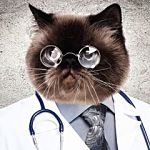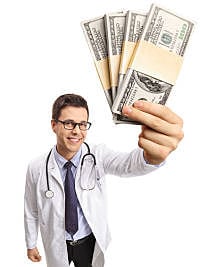 What about the doctors who don't return the burnout study - the non-respondents?
What about the doctors who don't return the burnout study - the non-respondents?
Are they different than the ones who do respond ?Specifically, are they more or less burned out than the people who send in the survey the first time they are asked??
For years this has been the biggest mystery surrounding any survey of physician burnout rates. It is a question I field often at our live training events. Up until now I have not been able to quote any research that attempted to answer the question.
==========
This is Blog Post #293
Complete Blog Library is Here
==========
Well now we have answer
The recent edition of the original physician burnout Super Study we wrote about in the last blog post contains a hidden second wave of surveys that solves this fundamental mystery.
============
Related:
The Fatal Flaws in the Burnout Survey Industry
============
This survey modification actually gives us three important new data points:
- How burned out are the non-responders compared to docs who return the survey the first time?
- What incentive will get docs to respond to a burnout survey the second time around?
- How much does it cost a researcher to triple doctor's burnout survey response rate?
============
 1) What about the Non-Responders?
1) What about the Non-Responders?
This study sent out the Maslach Burnout Inventory and a few more questions in an email survey to a total of 30,456 US Physicians.
5197 doctors filled out and returned the survey
= 17% of the original mail out group
The researches then resent the survey to a group of 497 doctors who did not reply to the original email request.
Somehow they got 248 (52% !!) of them to respond this time around.
The Survey Said ...
There was no difference between the first round responders and these second round responders.
- No difference in demographics
- No difference in burnout severity
Mystery Solved
It appears that there is no difference between responders and non-responders to a physician burnout survey at least using this survey method. AND I am sure there will be calls for additional studies.
NOTE:
Survey return rates are a barometer in provider groups
In our consulting work with large physician employers, I can say with confidence there is a powerful signal sent by your burnout survey return rates. The survey return rate is a marker of the level of trust the doctors feel in the leadership team.
High survey return levels indicate higher levels of trust ... even if the results show high levels of burnout. When you get both low returns and high burnout rates ... you have a trust deficit and significant burnout. That is not a good combination.
This second / salvage round of surveys answered two more important questions as well ...
2) What incentive did they use to triple those response rates?
Not only did they get these round two doctors to chime in - remember these same people did not return the survey in the first round - they tripled the 17% return rate seen in round one.
So they went from ZERO to 52% return?
[ that is infinity times better, just sayin']
 What was the special sauce here???
What was the special sauce here???
They did two things differently:
a) They sent the survey out hard copy and by snail mail
b) They paid the doctors Cash Money to return the survey
============
3) How much money does it take to produce an infinitely larger return rate on your physician burnout surveys?
A $20 gift certificate.
Yup.
Free food and CME gets doctors to show up to trainings. After all, we are just big residents. And $20 will get your response rates from 17 - 52% as long as you mail them out hard copy.
============
There you have it
The answers to the three questions above are simple:
- ZERO
- CASH
- $20
And IMHO, those are the three breakthrough answers we got from the 2017 edition of the Mayo Physician Burnout Super Study.
============
PLEASE LEAVE A COMMENT
Are you surprised by the finding that responders and non-responders are identical?
How much cash money would it take to get you to return a physician burnout survey from someone other than your employer?


